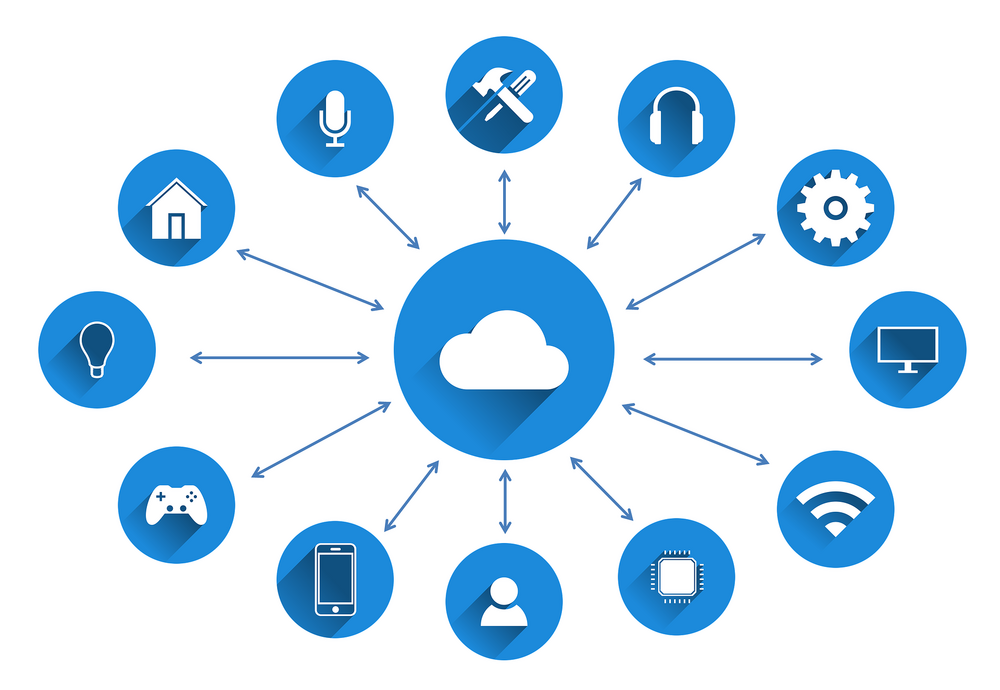We offer you and your projects’ partners a win-win solution based on a solid, long-lasting, fruitful relationship
You outsource the mundane & concentrate on what you do best
This article is part of a blog series on the labor shortage in the construction industry. To overcome the labor shortage, the industry will have to automate its processes and use various technologies to boost efficiency, strengthen employee retention, attract the younger generation, and make recruitment attractive by offering competitive wages and benefits.
Strategies recruiters use to find their best talent are based on technology. The techniques and tools are reviewed below.
Applicant tracking systems (ATS) screen resumes before being reviewed by any human.
ATS is software used in recruitment to manage and streamline the process, by organizing applications, screening resumes, and tracking candidates.
ATS software creates and distributes job postings. They help people in recruitment to collect applications. The software manages the entire process from initial application to offer.
Let us review the benefits ATS can bring to the process.
They automate tasks, allowing recruiters to save time, and ensure consistency in the hiring process.
ATS provides a central location for storing and accessing candidate information.
ATS helps recruiters easily identify if candidates are qualified for the job by filtering resumes based on keywords and criteria.
ATS provides candidates with an efficient and positive experience.
iCIMS is a leading ATS to manage and streamline the recruitment process.
Greenhouse is good for mid-sized to large teams as it is a very collaborative tool.
Workable is scalable as it is powered by an artificial intelligence resume-sourcing tool.
You should make your applicants aware that they must provide ATS-Friendly resumes if they want to be noticed. The resumes must be read easily by ATS and without graphics, tables, and creative fonts that might confuse the software.
The candidates must use keywords from the job description in their resume to improve their match rate.
Spelling and grammar must be checked to ensure the resume is error-free.
The recruits should use full titles instead of acronyms, so they will not confuse the software.

You may analyze candidate responses to ensure they align with your company's values and work habits, ethics, and potential biases in the data used. Cultural fit is crucial to align the applicant’s values, beliefs, and behavior with those of the organization. A good cultural fit improves employee satisfaction, retention rates, and performance.
Artificial Intelligence (AI) is used to assess accurately and efficiently the fit of the recruit with the organization’s culture. It facilitates the decision-making process for recruiters. AI reduces human biases and understanding of the cultural fit by using data insights.
AI in cultural assessments uses natural language processing (NLP), machine learning, and sentiment analysis. The technologies analyze the recruits’ responses, their social media activity, and other data to ensure they fit with the company's culture.
Some AI tools like Pymetrics and HireVue use games and video interviews to evaluate candidates' social and behavioral patterns to assess alignment with the company’s culture.
Improved accuracy and efficiency by using AI tools to review large amounts of data quickly, consistently, reliably and without bias to assess a true fit for the company's culture.
The algorithms analyze data and predict outcomes.
For example, is the language used by applicants during interviews aligned with your core values and communication styles? Zappos, an online shoe and clothing retailer, is a pioneer for its great customer service culture. When they recruit and onboard new employees, they must ensure they fit their culture, so they continue giving their clients exceptional service.
Despite AI tools' advantages, some challenges may arise. The algorithms written by humans could be biased.
AI recruitment tools may not be sufficiently private in processing personal candidate information.
These risks can be easily mitigated using the best AI practices and solid data protection to respect candidates' privacy through secured data.
If you implement, AI tools to assess cultural fit, you must carefully plan and integrate them into existing recruitment processes to protect your data.
The AI communication can be set to invite candidates for an appointment. Alternatively, AI can set up chatbots, through automatic chatting software.
Users must be trained to use the tools properly, effectively, and ethically, this may prevent the candidates' privacy from being compromised.
Continuously monitoring and improving AI systems is paramount to ensure the integrity of data. Changes, in AI technology, are difficult to follow, as they often and quickly arise.
Emerging technologies like emotional intelligence, AI, and predictive analytics require constant modifications of the process to improve the accuracy of cultural fit assessments.
AI can scan and analyze candidate questionnaires.
You can use AI to assess, if your candidates fit with the job descriptions or not. AI scans the job description, optimizes it, and sends it electronically or by mail to the applicants.
The AI communication can be set to invite candidates for an appointment. Alternatively, AI can set up chatbots, through automatic chatting software.

Communication in recruitment is essential. It must be transparent and regular.
Communication could be either by email, messaging platforms, or video conferencing. Recruiters must choose their preferred way of communicating according to their recruitment requirements.
Below we explore why communication is important in recruitment.
Building trust, engagement, and valuing applicants can only be achieved by keeping them informed, through the process.
For example, you may use Virtual Reality (VR) communications. An emerging recruitment technique that helps you create an immersive interview experience.
Video conference tools with candidates, make you feel that you are meeting them face-to-face as if the candidates were visiting your office.
When you put the applicant on your shortlist, you can organize virtual visits to your offices to show the applicants what they can expect when they join your company.
When you have decided on the last two people, you can demonstrate the working culture with virtual reality (VR).
To enhance the candidates' experience, the communication must be positive and transparent even when timelines and or expectations change. Clear communication can streamline the recruitment process.
Open and transparent communication reduces, costs and time to hire, by ensuring candidates are accurately informed and self-selected appropriately.
Long-term partnerships, and strong professional relationships, with candidates can only be effective when open communication happens.
To attract top talent potential, recruits must have a positive experience. They then become a brand advocate, helping to attract top talents in the future.

There are so many tools to choose the right way to communicate with applicants that we decided to review them below.
Effective communication is crucial in recruitment, and various channels such as email, social media, phone calls, and video interviews may engage candidates, and build relationships with them. Use multiple channels, don't rely on just one method of communication. Use a mix of email, messaging, and video conferencing to reach candidates effectively.
Email remains a primary channel for sending formal updates, job descriptions, and offer letters.
Text messaging can be used for quick updates, reminders, and engaging in real-time conversations.
Video conference interviews can help you reach candidates living far away to expand your talent search beyond your region.
Rather than calling the candidates for a face-to-face meeting at the first interview, you could conduct it on video call and save money.
Video conferencing is a great tool for interviewing candidates in committees instead of one-to-one interviews.
Video calls facilitate virtual interviews and meetings, making the process more convenient and cost-effective.
Social media platforms can be used to promote job openings and engage with potential candidates.
For example, social media is used to advertise and promote your job postings to potential applicants on various platforms such as LinkedIn.
With social media, you may reach applicants, not thinking about changing their place of work, but are intrigued by your offer. Post on social media platforms to share the opportunity with your followers, who may repost it to their followers, creating a snowball effect.
Recruitment software with integrated communication features can streamline the process and ensure consistent communication.
For example, digital job posting platforms like Indeed, LinkedIn, Glassdoor, and ZipRecruiter are useful for joining employers to jobseekers.
The platforms have plenty of features to target different industries and job types.
Personality surveys can help you identify key traits and qualities of each applicant before you interview them, so you can get a better understanding of your applicants, before interviewing them.
Interviewing a person face-to-face has great benefits, such as allowing to experience their body language. A video interview only displays the candidate's face or upper body, making it difficult to get
clarity on how thwy will fit your culture and expectations.
Effective recruitment communication needs to prioritize transparency and clarity. This can be achieved by personalizing interactions, continuously providing updates, leveraging all communication channels, accepting and giving feedback, and providing a positive candidate experience.
Address candidates by name and tailor your messages to their specific needs and interests.
Respond to inquiries promptly and provide regular updates throughout the recruitment process.
Avoid jargon and ensure your messages are easy to understand.
Communicate the next steps in the process and any deadlines or requirements.
Use respectful and courteous language in all communications.
Solicit feedback from candidates and use it to improve your communication strategies.
Recruitment software can help streamline communication and ensure consistency.
The specific techniques or tools to use is up to your recruitment. We recommend that you use all of them depending on your type of recruitment.
Finding skilled and semi-skilled workers is complicated in the current environment, but you are not alone in experiencing these difficulties.
Below are hiring techniques using technology such as applicant tracking systems to organize your hiring process and help you streamline your processes by classifying candidate credentials and data to simplify and eliminate mundane tasks as discussed below.
Information about the people involved in the recruiting process like resumes or cover letters involves grouping candidates. Looking at groups of people with similar experience or skills can smooth the recruitment process.
Using software that can filter applications that do not meet the job criteria and send automatic rejection letters....

The labor crisis is a worldwide problem, so start acting now. The construction labor shortage will not be resolved soon.
Look for alternative sources of labor, retain, and set HR policies that can keep your current employees in your company, so you do not have to find new ones (more on this in our next article in this blog series). We will explore more how to retain employees in the next week article.
Implement and use modern recruiting techniques. Investing in modern technologies has a high return on investment, so do not hesitate to jump in today.
Project requirements can vary from client to client. Is your organization flexible enough to respond to their needs? Try our Organization Diagnostic
In this diagnostic, we evaluate your BIM capabilities. Is your culture compatible with the BIM philosophy? What investment is required to make, your company, BIM Level 3 ready?
Implementing BIM can be daunting, but Driving Vision is here to help you at the pace you are comfortable with. Get started by getting in touch now
We act as your BIM coordinator
We Support your BIM IT
We Train & Coach you
We Innovate in Technology
We offer you and your projects’ partners a win-win solution based on a solid, long-lasting, fruitful relationship
You outsource the mundane & concentrate on what you do best
